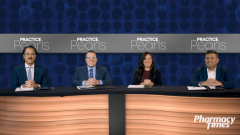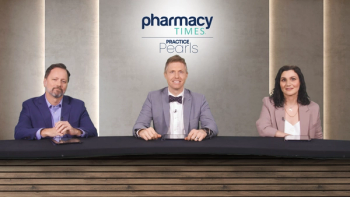
Patient and Provider Communication and Collaboration in Hemophilia A Treatment
Lisa Schrade, PharmD, and Robert Sidonio Jr, MD, MSc, discuss strategies for identifying and managing adverse effects in outpatient hemophilia A treatment, emphasizing collaboration and patient education.
Episodes in this series

Jonathan Ogurchak, PharmD, CSP: Dr Schrade, I’m going to ask you a question here. In practice, when you’re dealing with those patients in that outpatient-type setting, are there other tricks of the trade that you’ve noticed when it comes to identifying or helping to treat some of those [adverse] effects when having those conversations with patients on a month-to-month basis?
Lisa Schrade, PharmD: Luckily, our back-pocket experience with the products, I know that when emicizumab first came out, we knew nothing. We were all just treading water, trying to figure out what was going to happen. We were very reluctant about allowing patients to dispense the medication. We tried to make sure that they had Benadryl [diphenhydramine] in the home, an anaphylaxis kit, EpiPen [epinephrine], something of that nature. Just advise them what the signs and symptoms of an anaphylactic reaction would be. But as far as the [adverse] effects go, we kind of just base it off of our history of dispense and tell them, in my experience, I have not had any patients who have had any issues, or the most severe issue, like Dr Sidonio had said, was some nausea, some headache, which is transient, and can last up to the first couple of weeks, maybe even a couple of months of the therapy, but it does dissipate. We have a conversation with them and say, what is your comfort level? Is the headache or nausea substantial enough toward impacting your quality of life, or is it something that’s just kind of like there, and you’re like, “It’s bothersome, maybe you can push through it?” And then we have a conversation with the provider and say, hey, this is what they’re telling us is happening. What would you like us to do going forward? So again, it’s all about that collaboration of care between the patient, the provider, and the pharmacy. We need to make sure that we’re listening, if the patient just says, oh, I’m having [an adverse] effect to the medication. We don’t just take that at face value and just stop the therapy. We need to dive a little bit deeper and find out exactly what they’re explaining to us, because it could be something very simple, like for patients who are new to factor products, if they’re pushing it too fast and they’re getting that racing heartbeat and that sense of anxiety, you’re introducing a volume of fluid into the body and it doesn’t like it. It’s telling you like, hey, I need you to slow down. We kind of coach them through that. We do encourage them to possibly have a skilled home nurse come to their house to see their technique, maybe give them a little bit more pointers. Then again, we coordinate with the treatment center just to say, hey, this is what’s going on. This is what we suggested. Would you like us to do anything else?
Robert Sidonio Jr, MD, MSc: The family, particularly mothers of these children, they’re very attuned and really understand if there’s something going on. Like, for example, one of the few reactions we had with a [pegylated] product, the mother said that he seemed irritable and turned a little bit more red, which is very difficult in the young child. They’re always, you know, when you’re injecting them, they’re not going to be happy. They’re going to be screaming, right? But we said that’s pretty reasonable. Why don’t we just bring the kid in and evaluate this, and we did it, and he had a more, much more aggressive reaction in front of us. It’s really just, you know, listening to the family. I was very glad that we did that in the clinic and not at home, of course, that would have been much more alarming for the family. It’s nice. I think families get it if you educate them on it. It’s really difficult if you ever get a new drug and you open up that tiny little piece of paper that’s in the font type of like 4 and it lists every [adverse] effect or you listen to a commercial and you hear some guy racing through the [adverse] effects. Really trying to understand that they saw all these people got colds on the trial. You have to document that they had sore throat or they had a cough, and we don’t think it was related. Trying to make sure they understand that yes, all these were documented on there. We don’t think it caused the flu. We don’t think it caused, you know, somebody having an appendicitis on the trial. I think trying to give them some context to understand that because I do find, and you see this on social media where they just read that out and say, “Look at all these [adverse] effects. Nobody told me about these.” I think having that conversation, I like to have it in person. I feel like it’s a little easier to have this, and this is about having those conversations really early, before they make the decision and they can allow them the time to think about it, hopefully fairly quickly and then prescribe it so.
Transcript is AI generated and reviewed by a Pharmacy Times editor.
Newsletter
Stay informed on drug updates, treatment guidelines, and pharmacy practice trends—subscribe to Pharmacy Times for weekly clinical insights.











































































































































































































